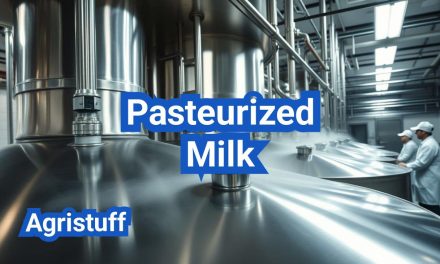Originating from the Emme Valley in Switzerland, this iconic cheese is known for its distinctive holes and rich flavor profile. As a Swiss-type cheese ( Hard Cheese ), it has gained popularity worldwide for its versatility in culinary applications.
The history and production process of this cheese are deeply rooted in traditional methods, yet it has evolved to incorporate modern equipment and techniques. Understanding its types, processing steps, and equipment is crucial for appreciating its value in various cuisines.
From its rich history to its diverse uses in cooking, this cheese has become a staple in many kitchens. Its unique flavor and texture make it a favorite among cheese enthusiasts.
Key Takeaways
- Emmental Cheese originates from the Emme Valley in Switzerland.
- It is classified as a Swiss-type cheese with a rich history.
- The cheese is known for its distinctive holes and rich flavor.
- Understanding its types and processing steps is crucial for culinary applications.
- Modern equipment has evolved its traditional production process.
The Origins of Emmental Cheese
With a history spanning over seven centuries, Emmental cheese originated in the picturesque Emme Valley in Switzerland. This region, known for its lush pastures and traditional dairy farming, provided the ideal conditions for the development of this iconic cheese.
Swiss Beginnings in the Emme Valley
The Emme Valley, located in the canton of Bern, Switzerland, is where Emmental cheese was first produced in the 13th century. The valley’s fertile land and favorable climate allowed for the establishment of thriving dairy farms, laying the foundation for the cheese’s production. The name ‘Emmental’ is derived from the Emme River, which runs through the valley.
Historical Development and Spread
Over the centuries, Emmental cheese production spread throughout Switzerland and beyond. By the 17th and 18th centuries, it had become a staple in Swiss dairy production, with its popularity extending to other parts of Europe. The cheese’s durability and flavor profile made it a favorite among locals and traders alike.
Cultural Significance in Switzerland
Emmental cheese holds a significant place in Swiss culture and cuisine. It is not only a symbol of Swiss heritage but also an integral part of traditional Swiss dishes, such as fondue and raclette. The cheese is celebrated for its quality and is often associated with Swiss hospitality and culinary traditions.
What Makes Emmental Cheese Unique

The characteristic holes and distinct flavor profile make Emmental cheese truly unique. This section delves into the specifics of what sets Emmental apart from other cheeses.
The Signature “Eyes” or Holes
Emmental cheese is perhaps most famous for its large holes, or “eyes,” which are formed during the fermentation process. The presence of these holes is not just aesthetically pleasing; they are also an indicator of the cheese’s quality and proper aging. The formation of these “eyes” is due to the release of carbon dioxide gas by bacteria, specifically Propionibacterium freudenreichii, during fermentation.
As noted by cheese experts, “The size and distribution of the holes can vary depending on factors such as the aging process and the specific conditions under which the cheese was produced.”
“A well-made Emmental should have a balanced appearance with evenly distributed holes, indicating a well-controlled fermentation process.”
Distinctive Flavor Profile and Texture
Emmental cheese is known for its nutty, slightly sweet flavor, which develops during the aging process. The texture is firm yet smooth, making it suitable for a variety of culinary applications, from slicing for sandwiches to grating over dishes.
The flavor profile of Emmental is often described as rich and complex, with hints of fruitiness. This is a result of the bacterial fermentation and the aging process, which contributes to its distinctive taste.
Classification as a Hard Alpine Cheese
Emmental is classified as a hard Alpine cheese due to its production methods and characteristics. Hard Alpine cheeses are known for their dense texture and long shelf life, traits that are achieved through specific production and aging processes.
As a hard Alpine cheese, Emmental is produced in a manner that involves heating the curd to high temperatures, removing moisture, and aging the cheese. This process results in a product that is not only flavorful but also durable and versatile.
Protected Varieties and Nomenclature
Protected designations of origin and geographical indications play a crucial role in distinguishing various Emmental cheese types. These classifications ensure that Emmental cheese produced in specific regions adheres to traditional methods and quality standards, thereby protecting the integrity and authenticity of the product.
Allgäuer Emmentaler PDO
Allgäuer Emmentaler is a Protected Designation of Origin (PDO) cheese originating from the Allgäu region in Germany. This variety is known for its rich flavor and characteristic large holes. The production of Allgäuer Emmentaler PDO is strictly regulated, ensuring that it is made according to traditional methods and within the defined geographical area.
Emmental de Savoie PGI
Emmental de Savoie is a Protected Geographical Indication (PGI) cheese produced in the Savoie region of France. This Emmental variety is appreciated for its nuanced flavor profile, which is slightly different from other Emmental types due to the specific terroir and production techniques used in Savoie.
Swiss AOP Emmental
Swiss AOP Emmental, also known as Emmental Switzerland, is a Protected Designation of Origin (PDO) cheese in Switzerland. It is one of the most well-known Emmental varieties, celebrated for its high quality and distinctive characteristics. The production of Swiss AOP Emmental is governed by strict regulations to ensure its authenticity and excellence.
Naming Regulations and Standards
The naming of Emmental cheese is subject to regulations to prevent misuse and ensure that consumers are not misled. In the European Union, the protection of geographical indications and designations of origin is governed by specific laws, which dictate how Emmental cheese can be labeled based on its origin and production methods.
| Emmental Variety | Protection Status | Region |
|---|---|---|
| Allgäuer Emmentaler | PDO | Allgäu, Germany |
| Emmental de Savoie | PGI | Savoie, France |
| Swiss AOP Emmental | PDO (AOP) | Switzerland |
The protection of Emmental varieties not only preserves traditional cheese-making practices but also supports local economies by promoting authentic products. Consumers can trust that Emmental cheese bearing these protected designations meets high standards of quality and authenticity.
Emmental Cheese Types Around the World

The versatility of Emmental cheese is reflected in its numerous variations produced worldwide. While traditional Emmental originates from Switzerland, its popularity has led to diverse interpretations in other countries.
Traditional Emmental
Traditional Emmental is characterized by its rich flavor and distinctive holes. This classic version is still produced in Switzerland, adhering to traditional methods.
Traditional Swiss Emmental
Swiss Emmental is renowned for its high quality and is often considered the gold standard. It is produced in the Emme Valley and other regions, following strict production guidelines.
French and German Variations
In France, Emmental is produced with a slightly different flavor profile, often with a milder taste. German Emmental, known as “Allgäuer Emmentaler,” is another notable variation, known for its rich, creamy flavor.
American-Style “Swiss Cheese”
American “Swiss Cheese” is a domestic interpretation of Emmental, often milder and with larger holes. It’s a popular variety in the United States, used in sandwiches and fondue.
Artisanal vs. Mass-Produced Varieties
The production of Emmental cheese ranges from artisanal, small-batch methods to large-scale industrial processes. Artisanal Emmental is often characterized by a more complex flavor profile, while mass-produced varieties are generally more consistent and milder.
Emmental cheese enthusiasts can explore various types, each with its unique characteristics. Whether you prefer the traditional Swiss version or a more modern interpretation, there’s an Emmental cheese to suit every palate.
- Traditional Swiss Emmental
- French Emmental
- German Allgäuer Emmentaler
- American “Swiss Cheese”
As Emmental cheese continues to evolve, its global variations offer a rich culinary experience. Exploring these different types can enhance appreciation for this versatile cheese.
The Science Behind the Holes
The iconic holes in Emmental Cheese are not just aesthetically pleasing; they are a result of a precise biochemical process involving Propionibacterium freudenreichii. This bacteria plays a crucial role in the fermentation process, contributing to the cheese’s unique flavor and texture.
Role of Propionibacterium freudenreichii
Propionibacterium freudenreichii is a type of bacteria that is integral to the production of Emmental Cheese. It is responsible for converting lactate into propionic acid, acetic acid, and carbon dioxide gas. The release of carbon dioxide is what creates the characteristic holes or “eyes” in the cheese.
Gas Formation During Fermentation
During the fermentation process, Propionibacterium freudenreichii ferments the lactate in the cheese, producing carbon dioxide gas as a byproduct. This gas gets trapped within the cheese matrix, forming bubbles that eventually become the holes characteristic of Emmental Cheese.
- The amount of carbon dioxide produced affects the size and number of holes.
- The rate of gas production influences the distribution of holes throughout the cheese.
Factors Affecting Hole Size and Distribution
Several factors can influence the size and distribution of holes in Emmental Cheese, including:
- The temperature at which the cheese is aged.
- The moisture content of the cheese.
- The presence and activity level of Propionibacterium freudenreichii.
Modern Control of “Eye” Formation
Modern cheese production techniques allow for a controlled environment that can influence the formation of “eyes” or holes. By adjusting factors like temperature, humidity, and the aging process, cheesemakers can achieve a consistent quality and appearance in their Emmental Cheese.
“The art of cheesemaking is not just about following a recipe; it’s about understanding the science behind it. In the case of Emmental Cheese, controlling the formation of holes is crucial for achieving the desired flavor and texture.” – Expert Cheesemaker
Step-by-Step Emmental Cheese Processing
The production of Emmental Cheese involves a meticulous process that ensures its distinctive flavor and texture. This process is crucial for developing the cheese’s signature characteristics, including its large holes and rich, nutty flavor.
Milk Collection and Quality Testing
The journey of Emmental Cheese begins with milk collection. High-quality milk is essential for producing excellent cheese. Dairy farmers typically collect milk from cows that are fed a diet rich in grass and hay, which contributes to the cheese’s flavor profile. The milk is then transported to the cheese dairy, where it undergoes rigorous quality testing to ensure it meets the required standards.
| Milk Quality Parameter | Acceptable Range |
|---|---|
| pH Level | 6.5 – 6.7 |
| Bacterial Count | < 50,000 CFU/mL |
| Somatic Cell Count | < 200,000 cells/mL |
Pasteurization Considerations
Before cheese production begins, the milk is pasteurized to eliminate any harmful bacteria. Pasteurization involves heating the milk to a high temperature (usually around 72°C) for a short period (typically 15-20 seconds), followed by rapid cooling. This process ensures the milk is safe for consumption while preserving its nutritional properties.
Curd Formation and Cutting Techniques
After pasteurization, starter cultures are added to the milk to initiate the fermentation process. Rennet is then added to coagulate the milk, forming curds. The curds are cut into small pieces to release whey and create a smooth, even texture. The size of the curd pieces can vary depending on the desired final texture of the cheese.
Cooking and Draining Procedures
The curds and whey are then cooked to a temperature of around 53°C, with constant stirring to prevent the curds from matting together. After cooking, the curds are separated from the whey and transferred to cheesecloth or a colander lined with cheesecloth, where they are allowed to drain. The whey is drained off, and the curds are molded into their characteristic wheel shape.
By following these precise steps, cheese makers can produce high-quality Emmental Cheese with its characteristic holes and rich flavor, making it a favorite among cheese enthusiasts worldwide.
How to Make Emmental Cheese at Home

Emmental Cheese, known for its distinctive holes and rich flavor, can be made at home with the right tools and a bit of patience. Making this iconic Swiss cheese involves several steps, from preparing the milk to aging the cheese.
Equipment and Ingredients Needed
To start making Emmental Cheese, you’ll need a few pieces of equipment and some specific ingredients. The necessary equipment includes a large pot for heating the milk, a cheese mold to shape the cheese, and a cheese cloth or butter muslin for draining.
- Large pot (at least 4-quart capacity)
- Cheese mold and follower
- Cheese cloth or butter muslin
- Thermometer
- Long knife for cutting curds
The ingredients required are high-quality milk, cheese cultures, rennet, and salt. It’s crucial to use fresh, high-quality ingredients to ensure the best flavor and texture.
- 1 gallon of cow’s milk (whole milk is preferred)
- Mesophilic cheese culture
- Rennet (vegetable or animal)
- Salt
Step1: Preparing and Heating the Milk
The first step in making Emmental Cheese is to prepare and heat the milk. Begin by heating the milk to a temperature of around 86°F (30°C). This is a critical step as it prepares the milk for the addition of the cheese culture.
Key considerations: Ensure the milk is heated evenly and gently to avoid scorching.
Step2: Adding Cultures and Forming Curds
Once the milk has reached the desired temperature, it’s time to add the mesophilic cheese culture. After adding the culture, allow the milk to sit for about 45 minutes to an hour to let the culture grow. Then, add rennet to help form curds.
Tip: Stir the rennet in gently but thoroughly to ensure even distribution.
Step3: Cutting, Cooking, and Draining
After the curds have formed, they need to be cut, cooked, and drained. Cutting the curds into small pieces helps release whey and creates a smooth, even texture in the final cheese. Cooking the curds involves heating them gently to around 125°F (52°C) to firm them up.
- Cut the curds into 1/2-inch pieces.
- Cook the curds gently, stirring frequently, until they reach the desired temperature.
- Drain the curds using a cheese cloth or butter muslin.
Making Emmental Cheese at home is a multi-step process that requires patience and attention to detail. By following these steps and using the right equipment and ingredients, you can create a delicious and authentic Emmental Cheese.
The Three-Stage Maturation Process

Emmental Cheese undergoes a unique three-stage maturation process. This process is crucial for developing the cheese’s characteristic flavor and texture.
Cold Room Initial Aging
The first stage of Emmental Cheese maturation occurs in a cold room, where the cheese is stored at a temperature between 10°C to 12°C (50°F to 54°F) for several weeks. This initial aging phase allows the cheese to develop its basic flavor profile.
Warm Room Fermentation
After the initial aging, the cheese is transferred to a warm room, where the temperature is maintained between 20°C to 24°C (68°F to 75°F). This stage is critical for the fermentation process, during which the bacteria Propionibacterium freudenreichii produce carbon dioxide, creating the characteristic “eyes” or holes in the cheese.
Final Aging and Development
The final stage involves further aging in a cold room, allowing the flavors to mature and integrate. This stage can last several months, during which the cheese develops its full flavor potential and texture.
Monitoring and Quality Control
Throughout the maturation process, the cheese is regularly monitored for quality. This includes checking for proper fermentation, texture, and flavor development. Any cheese that does not meet the quality standards is removed from the production line.
| Stage | Temperature Range | Duration | Key Developments |
|---|---|---|---|
| Cold Room Initial Aging | 10°C to 12°C (50°F to 54°F) | Several weeks | Basic flavor profile |
| Warm Room Fermentation | 20°C to 24°C (68°F to 75°F) | Several weeks | Formation of “eyes,” flavor enhancement |
| Final Aging and Development | Cold room conditions | Several months | Maturation of flavors, texture development |
The three-stage maturation process is a testament to the craftsmanship involved in producing high-quality Emmental Cheese. By carefully controlling the aging environment, producers can ensure that their cheese meets the highest standards of flavor and quality.
Commercial Emmental Cheese Production

Commercial production of Emmental cheese involves a meticulous process that balances heritage techniques with modern quality control measures. This balance is crucial for maintaining the characteristic flavor and texture of Emmental while meeting large-scale demand.
Factory Setup and Equipment
The setup of a commercial Emmental cheese factory requires significant investment in specialized equipment. This includes large pasteurization vats, curd-cutting machines, and aging facilities that can control temperature and humidity precisely. The equipment must be designed to handle the specific needs of Emmental production, such as the formation of the characteristic “eyes” or holes.
Scaling Traditional Methods
Scaling traditional Emmental cheese-making methods to a commercial level involves maintaining the integrity of the process while increasing efficiency. This means using larger quantities of high-quality milk, precise temperature control during fermentation, and careful monitoring of the aging process to ensure consistency across batches.
Quality Assurance Procedures
Quality assurance is paramount in commercial Emmental production. This involves regular testing of the milk for quality and purity, monitoring the cheese-making process for consistency, and aging the cheese under controlled conditions to develop the desired flavor and texture. Implementing a robust quality assurance system helps in maintaining high standards and complying with regulatory requirements.
Distribution and Packaging
Once the Emmental cheese is aged to perfection, it is prepared for distribution. This involves cutting, packaging, and labeling the cheese according to market requirements. Proper packaging is crucial to preserve the quality of the cheese during transportation and storage. Distribution channels may include direct sales to retailers, export to other countries, or supplying to foodservice providers.
Nutritional Profile and Health Aspects

Emmental Cheese is not only renowned for its distinctive flavor and texture but also for its impressive nutritional profile. As a rich source of essential nutrients, it offers numerous health benefits when consumed in moderation.
Caloric Content and Macronutrients
Emmental Cheese is relatively high in calories, primarily due to its fat content. A 100-gram serving of Emmental Cheese typically contains around 380-400 calories. The macronutrient breakdown includes approximately 30% fat, 28% protein, and minimal carbohydrates.
The fat content in Emmental Cheese is predominantly saturated, which is a consideration for those monitoring their fat intake. However, it’s worth noting that Emmental Cheese also contains a significant amount of protein, making it a valuable component of a diet that requires high protein intake.
Vitamins and Minerals
Emmental Cheese is a good source of various vitamins and minerals. It is particularly rich in calcium, phosphorus, and vitamin B12. These nutrients are crucial for maintaining bone health, supporting metabolic functions, and facilitating the production of red blood cells.
| Nutrient | Amount per 100g | % Daily Value |
|---|---|---|
| Calcium | 800-1000 mg | 80-100% |
| Protein | 28-30 g | 56-60% |
| Vitamin B12 | 1.5-2.5 mcg | 25-40% |
| Phosphorus | 600-700 mg | 60-70% |
Digestibility and Lactose Content
Emmental Cheese has a relatively low lactose content due to its fermentation process, making it somewhat more tolerable for individuals with lactose intolerance compared to fresh dairy products. However, it’s still a dairy product and may not be suitable for everyone with severe lactose intolerance.
The digestibility of Emmental Cheese can be influenced by its aging process. Generally, the longer it is aged, the more easily it can be digested by those with mild lactose intolerance.
Health Benefits and Considerations
Consuming Emmental Cheese in moderation can provide several health benefits due to its nutrient-rich profile. The high calcium and phosphorus content supports bone health, while the protein contributes to muscle maintenance and repair.
Key Health Considerations:
- High in saturated fats, so moderation is advised.
- Rich in calcium and phosphorus for bone health.
- Good source of protein for muscle maintenance.
- Contains vitamin B12, essential for red blood cell production.
Emmental vs. Other Swiss Cheeses

When it comes to Swiss cheese, Emmental is often mentioned alongside Gruyère, Appenzeller, and Raclette, but what sets each apart? Switzerland’s diverse cheese-making traditions have resulted in a variety of cheeses, each with its unique characteristics.
Comparison with Gruyère
Gruyère Cheese and Emmental Cheese are both Swiss classics, but they differ significantly in terms of flavor and texture. Gruyère has a richer, more pronounced taste with a creamy texture, while Emmental is known for its nuttier flavor and firmer texture. The holes in Emmental are also generally larger than those found in Gruyère.
Differences from Appenzeller
Appenzeller cheese stands out for its strong, tangy flavor, which is developed during its unique washing process. Unlike Emmental, Appenzeller has a more intense taste and a smoother texture. The aging process for Appenzeller also involves herbal brine, which contributes to its distinct flavor profile.
Contrast with Raclette
Raclette is another Swiss favorite, known for its melting properties and mild, creamy flavor. Unlike Emmental, Raclette is typically served melted, often in dishes like raclette dinners where it’s melted and scraped over various accompaniments. Emmental, while also used in melting, has a more robust flavor and is often grated or sliced for various culinary applications.
Swiss Cheese Family Characteristics
Despite their differences, Emmental, Gruyère, Appenzeller, and Raclette all share certain characteristics that define Swiss cheese. These include a strong tradition of dairy farming, precise cheese-making techniques, and a focus on quality and aging processes. The result is a family of cheeses that are not only delicious on their own but also versatile in culinary applications.
Understanding the differences between these Swiss cheeses can enhance one’s appreciation for the rich dairy heritage of Switzerland. Whether you’re a cheese aficionado or just exploring the world of Swiss cheese, Emmental and its counterparts offer a wealth of flavors and textures to enjoy.
Culinary Uses of Emmental Cheese

Emmental cheese is a versatile ingredient used in various culinary applications. Its rich flavor and excellent melting properties make it a favorite among chefs and home cooks.
Traditional Swiss Fondue Recipes
One of the most iconic uses of Emmental is in traditional Swiss fondue. This dish is a staple of Swiss cuisine, where Emmental is blended with other cheeses, white wine, and spices to create a smooth, creamy dip for bread.
A classic fondue recipe typically includes a mix of Emmental and Gruyère, providing a rich and nuanced flavor profile.
Sandwiches and Melting Applications
Emmental’s melting properties make it an excellent choice for sandwiches and other dishes where melted cheese is desired. It pairs well with meats like ham and turkey, and adds a rich flavor to grilled cheese sandwiches.
A popular application is in croque-monsieur, a French-inspired grilled ham and cheese sandwich that uses Emmental for its creamy texture.
Baking with Emmental
Baking with Emmental can add depth and richness to various dishes. It’s often used in quiches, savory tarts, and cheese bread.
For instance, an Emmental and herb quiche is a delicious breakfast or brunch option, combining the cheese’s nutty flavor with fresh herbs.
Wine and Food Pairings
Emmental cheese can be paired with a variety of wines and foods to enhance its flavor. For a simple snack, it pairs well with fruit and nuts.
When it comes to wine, a dry white wine like Chardonnay or Sauvignon Blanc complements Emmental’s rich flavor without overpowering it.
| Dish | Emmental’s Role | Pairing Suggestions |
|---|---|---|
| Swiss Fondue | Main cheese ingredient | Crusty bread, dry white wine |
| Grilled Cheese Sandwich | Melting cheese | Ham, turkey, tomato |
| Quiche | Adds depth and richness | Herbs, vegetables, bacon |
| Cheese Platter | Star cheese | Fruit, nuts, crackers |
Buying and Storing Emmental Cheese

When it comes to buying Emmental Cheese, understanding the price ranges and quality indicators is crucial. Emmental Cheese can vary significantly in price, depending on factors such as its age, production methods, and origin.
Price Ranges and Quality Indicators
The price of Emmental Cheese can range from relatively affordable to very expensive. High-quality Emmental is typically made from raw milk and aged for a longer period, which increases its price. Indicators of quality include the presence of a certification label, such as PDO (Protected Designation of Origin) or PGI (Protected Geographical Indication), and the reputation of the producer.
Where to Purchase Authentic Emmental
Authentic Emmental Cheese can be purchased at specialty cheese shops, high-end grocery stores, and directly from the manufacturer’s website. It’s essential to check the labels for authenticity and to read reviews or ask for recommendations to ensure you’re buying from a reputable source.
Proper Storage Techniques
To maintain the quality of Emmental Cheese, proper storage is essential. It should be stored in the refrigerator, wrapped in wax paper or aluminum foil, and kept away from strong-smelling foods, as it can absorb odors easily. Proper wrapping is crucial to prevent drying out.
Signs of Quality and Freshness
Signs of quality and freshness in Emmental Cheese include a firm texture, a rich and slightly nutty flavor, and the characteristic “eyes” or holes. Any mold that’s not part of the aging process should be trimmed off. If the cheese has an off smell or slimy texture, it may be past its prime.
By understanding the factors that affect the price and quality of Emmental Cheese and by storing it properly, you can enjoy this delicious cheese at its best.
Suitable Substitutes for Emmental Cheese
Various cheeses can substitute for Emmental, each with their own characteristics. Whether you’re looking for a similar flavor profile or need a dairy-free alternative, there are options available.
Similar Swiss-Type Cheeses
If you’re seeking a cheese similar to Emmental, other Swiss-type cheeses are a good place to start. Cheeses like Gruyère and Sbrinz share some similarities with Emmental.
- Gruyère: Known for its rich, creamy flavor, Gruyère can be used in many of the same applications as Emmental.
- Sbrinz: A strong, nutty cheese, Sbrinz can add depth to dishes where Emmental is called for.
Non-Swiss Alternatives
For those who can’t find Swiss-type cheeses or prefer other options, there are non-Swiss cheeses that can substitute for Emmental.
| Cheese | Flavor Profile | Usage |
|---|---|---|
| Gouda Cheese | Mild, creamy | Sandwiches, melting |
| Jarlsberg Cheese | Nutty, mild | Salads, sandwiches |
| Edam Cheese | Mild, slightly sweet | Snacking, sandwiches |
Dairy-Free Options
For those with dietary restrictions, dairy-free alternatives can mimic some of the properties of Emmental cheese.
- Vegan mozzarella: Can be used for melting purposes.
- Soy cheese: Offers a variety of flavors and can be used in sandwiches or grated over dishes.
Substitution Tips for Different Recipes
When substituting Emmental cheese, consider the flavor profile and melting properties needed for your recipe.
For fondue or melting: Gruyère or a similar Swiss cheese is ideal.
At The End of: Emmental Cheese
Emmental Cheese, known for its distinctive holes and rich flavor, has a rich history and diverse applications. Originating in the Emme Valley of Switzerland, this hard Alpine cheese has become a staple in many cuisines around the world.
The unique characteristics of Emmental Cheese, including its signature “eyes” and nutty flavor profile, are a result of careful processing and aging. From traditional Swiss recipes to modern adaptations, Emmental Cheese is versatile and enjoyed in various forms.
This Emmental Cheese Summary highlights the cheese’s nutritional benefits, culinary uses, and production processes. Whether you’re a cheese enthusiast or just discovering Emmental, understanding its history, types, and uses can enhance your appreciation for this iconic cheese.
In summary, Emmental Cheese is a complex and fascinating cheese with a rich heritage. Its Emmental Cheese Overview encompasses a broad range of topics, from its origins and production to its culinary applications and nutritional value, making it a valuable resource for anyone interested in this beloved cheese.
FAQ
What is Emmental Cheese?
Emmental Cheese is a type of hard Alpine cheese originating from the Emme Valley in Switzerland, known for its characteristic holes and nutty flavor.
What does Emmental Cheese taste like?
Emmental Cheese has a mild, slightly sweet, and nutty flavor profile, with a firm texture.
Why does Emmental Cheese have holes?
The holes in Emmental Cheese are formed by the bacteria Propionibacterium freudenreichii, which produces carbon dioxide gas during fermentation.
Where is Emmental Cheese from?
Emmental Cheese originates from the Emme Valley in Switzerland, although it is now produced in various countries around the world.
What type of cheese is Emmental?
Emmental is classified as a hard Alpine cheese, characterized by its firm texture and large holes.
How long does Emmental Cheese last?
The shelf life of Emmental Cheese depends on storage conditions, but it can last for several months when stored properly.
What is Emmental Cheese used for?
Emmental Cheese is a versatile cheese used in various culinary applications, including fondue, sandwiches, melting, and baking.
What is the difference between Emmental and Gruyère?
Emmental and Gruyère are both Swiss cheeses, but they differ in their flavor profiles, textures, and production methods.
Can I make Emmental Cheese at home?
Yes, it is possible to make Emmental Cheese at home with the right equipment and ingredients, following a step-by-step process.
What are the nutritional benefits of Emmental Cheese?
Emmental Cheese is a good source of protein, calcium, and vitamins, making it a nutritious addition to a balanced diet.
How do I store Emmental Cheese properly?
Emmental Cheese should be stored in a cool, dry place, wrapped in plastic or wax paper, to maintain its quality and freshness.
What are some suitable substitutes for Emmental Cheese?
Similar Swiss-type cheeses, such as Gruyère or Appenzeller, can be used as substitutes for Emmental Cheese, depending on the recipe.
Conclusion of Emmental Cheese: The ‘Swiss’ With Holes—Flavor and Uses
What Is Emmental Cheese?
Emmental Cheese is the classic Alpine “Swiss with holes,” a firm, cooked and pressed cow’s-milk cheese with a sweet-nutty aroma, buttery finish, and a glossy paste dotted with round “eyes.” In Switzerland it’s produced under strict rules as Emmentaler AOP, a mark that signals origin, traditional methods, and a guaranteed ripening profile. If you see the full name on a rind-stamped wheel, you’re looking at a benchmark style that shaped how the world imagines Swiss-type cheeses. Official Emmentaler AOP profile (Cheeses from Switzerland)
History and Origin
Emmental Cheese took its name from the Emme Valley in the canton of Bern, where valley dairies and Alpine pastures converged into a centuries-old cheesemaking culture. References to Emmental Cheese appear as early as the 16th century, and the style spread with trade from mountain chalets to European markets, eventually becoming a global icon of Swiss craftsmanship. History from Emmentaler AOP (official)
What AOP Means for Emmental Cheese
Within Switzerland, Emmental Cheese that bears the Emmentaler AOP mark must follow a protected specification—raw local milk, defined production zones, and dedicated affinage requirements. AOP (Appellation d’Origine Protégée) is the Swiss equivalent of Europe’s PDO, assuring buyers that Emmental Cheese meets rigorous rules from farm to cellar. AOP explained by Emmentaler AOP
Emmental Cheese vs “Swiss Cheese” in U.S. Stores
In the United States, you’ll often see Emmental Cheese sold simply as “Swiss cheese.” Legally, the FDA standard of identity defines “Swiss and emmentaler cheese,” including eye formation, moisture and fat ranges, and a minimum cure of 60 days. That means U.S.-made or imported Emmental-style cheeses follow a codified baseline—while genuine Emmentaler AOP remains a specific Swiss origin product. 21 CFR §133.195 (eCFR)
Types and Maturity Levels
Emmental Cheese is marketed by age: younger “Classic” wheels taste milder and melt like a dream; Réserve and Surchoix selections deliver deeper toasted-nut notes; and long-aged or “Extra” lots show concentrated sweetness and a firmer, crystalline bite. Some dairies label “Mountain” Emmental Cheese to signal production at higher elevations with distinct microflora and aging conditions. Emmentaler AOP product range (official)
European Cousins and Protected Names
Beyond Switzerland, you’ll encounter Emmental Cheese styles across Europe—Germany’s Allgäuer Emmentaler (PDO) and France’s Emmental de Savoie/Emmental Français Est-Central (PGI) are prominent examples. These schemes protect names and methods, while the generic term “Emmental/Emmentaler” can also appear on non-PDO cheeses that emulate the style. EU quality labels and register (European Commission)
Ingredients and Basic Make
Traditional Emmental Cheese uses a short list of ingredients: fresh cow’s milk, thermophilic starter cultures, Propionibacterium freudenreichii (for flavor and eyes), rennet, and salt. The high-temperature cook and long affinage distinguish Emmental Cheese from many other hard cheeses, creating its elastic body and clean, sweet finish. How milk becomes cheese (Emmentaler AOP)
Nutrition Snapshot for U.S. Shoppers
A serving of Emmental Cheese typically provides high-quality protein, substantial calcium, and minimal carbohydrates because lactose is fermented during ripening. For label-level detail, U.S. importers of Emmental Cheese publish nutrition panels that reflect the cheese’s concentrated dairy solids and low inherent sugar. Emmentaler AOP nutrition example (Emmi USA)
Processing Step 1: Milk Selection and Standardization
To make premium Emmental Cheese, cheesemakers begin by selecting clean, fresh milk, often standardizing fat and protein for consistency so the curd cooks evenly and develops the right moisture. This upstream control is vital for Emmental Cheese because its warm-room eye formation is very sensitive to composition and acidity. Cheese technology overview (Tetra Pak Dairy Processing Handbook)
Processing Step 2: Cultures, Coagulation, and Cutting
After cultures are added, the milk for Emmental Cheese is coagulated with rennet to form a firm gel that’s cut into rice- to pea-sized granules using knives or harps. The goal with Emmental Cheese is uniform grains that expel whey efficiently and set the stage for controlled cooking and the signature elastic paste. Coagulation and curd handling (Handbook)
Processing Step 3: Cooking the Curd
The curd for Emmental Cheese is “cooked” to comparatively high temperatures for a hard cheese, which firms the curd and reduces moisture. This step also selects for thermophilic bacteria that thrive in heat and helps Emmental Cheese develop its smooth, sliceable texture without brittleness. Cooked and pressed process (Emmentaler AOP)
Processing Step 4: Hooping, Pressing, and Brining
Once drained, Emmental Cheese curd is transferred into giant molds to form massive wheels, pressed to knit the curd and close mechanical openings, then brined to set the rind and balance salt. The scale of Emmental Cheese—often 75–120 kg per wheel—helps it ripen slowly and evenly. Hooping, pressing, and salting (official)
Processing Step 5: Warm-Room and Cellar Aging
During affinage, Emmental Cheese spends time in a warm room where Propionibacterium convert lactic acid into propionic acid, acetic acid, and CO₂; the gas collects to form the hallmark eyes. Afterward, Emmental Cheese moves to cool cellars to stabilize texture and deepen aroma over months of patient care. “Eyes in cheese” explainer (UW-Madison CDR)
The Science Behind the Holes
The eyes of Emmental Cheese are more than decoration—they’re a window into microbiology and physics. Culture strain selection, temperature curves, salt, and acidity all influence eye size and number; too much gas can cause splits, while too little yields a “blind” cheese. This balance defines the look and sweet-nutty aroma of Emmental Cheese. Why eyes form (UW-Madison CDR)
Required Equipment for Consistent Results
Producing Emmental Cheese at scale calls for large double-O vats or copper kettles, precise agitation and cutting tools, high-capacity cookers, heavy presses, brining systems, and climate-controlled warm rooms and caves. Integrating these steps ensures Emmental Cheese develops clean eyes, an even rind, and a consistent moisture-to-salt balance. Cheese production equipment (Tetra Pak)
Flavor, Texture, and Meltability
At the table, Emmental Cheese tastes mildly sweet to toasty-nutty depending on age, with an elastic, glossy paste that slices cleanly and melts smoothly. The gentle sweetness and lack of sharp bitterness make Emmental Cheese exceptionally versatile in both cold applications and hot dishes. Tasting notes (Emmi USA)
Best Uses at Home and in Foodservice
From deli sandwiches and breakfast omelets to French gratins and classic Swiss fondue blends, Emmental Cheese is a workhorse that adds lift and nutty depth without overpowering other ingredients. It’s also a star on cheese boards, where Emmental Cheese pairs well with apples, mustard, and dark breads. Serving ideas (Cheeses from Switzerland)
Buying and Labeling in the U.S.
When you shop stateside, Emmental Cheese may be labeled “Swiss.” If you prefer origin-specific wheels, look for “Emmentaler AOP” and a dairy stamp; for domestic styles, USDA grade standards describe quality markers such as eye characteristics and body texture. Either way, Emmental Cheese that meets the standard should be properly cured and eye-forming. USDA grades & standards
Storage and Food Safety
Store Emmental Cheese tightly wrapped in the refrigerator and rewrap after each use to reduce drying and odor transfer. Properly handled, hard and semi-hard cheeses like Emmental Cheese keep for weeks after opening, and any surface dryness can be carefully trimmed before serving. USDA home storage guidance
Raw vs. Pasteurized: The U.S. 60-Day Rule
Emmentaler AOP is traditionally made from raw milk, and when sold in the United States, raw-milk Emmental Cheese must be cured for at least 60 days at 35 °F or higher. Many domestic producers also make pasteurized versions; either way, curing and quality controls help ensure that Emmental Cheese is safe and delicious. FDA 60-day rule overview
Sustainability and Milk Quality Notes
Because it is produced at large wheel sizes and ripened for months, Emmental Cheese depends on steady milk quality and careful farm practices—factors that AOP rules in Switzerland reinforce through local sourcing and traceability. For buyers who value origin stories, Emmental Cheese offers a transparent farm-to-cheese narrative. AOP sourcing and rules (official)
Final thought
Emmental Cheese stands at the intersection of alpine heritage and dairy science: towering wheels, warm-room eye formation, and a sweet-nutty profile that’s as friendly in a grilled cheese as it is elegant on a board. If you want a reliable, all-purpose melt with character, Emmental Cheese delivers—true to the craft that made it a global standard. Learn more about Emmentaler AOP
Sources & References
- Cheeses from Switzerland – Emmentaler AOP profile
- Emmentaler AOP – History
- Emmentaler AOP – What does AOP mean?
- Emmentaler AOP – Product range
- Emmentaler AOP – How milk becomes cheese
- Emmi USA – Emmentaler AOP
- Tetra Pak Dairy Processing Handbook – Cheese chapter
- Tetra Pak – Cheese production equipment
- UW-Madison Center for Dairy Research – Eyes in cheese
- eCFR – 21 CFR §133.195 Swiss and emmentaler cheese
- USDA AMS – Swiss/Emmentaler grades & standards
- USDA – Home storage guidance for cheese
- FDA – Raw-milk cheese aged 60 days










